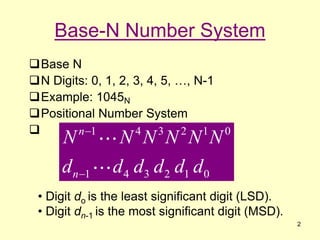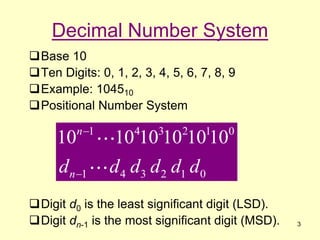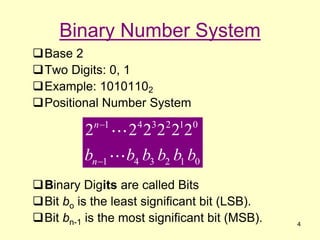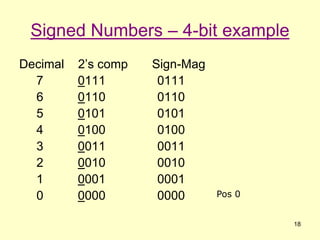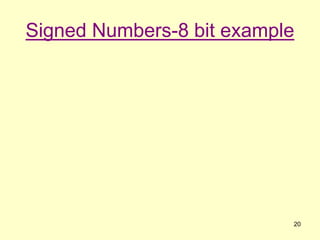The document discusses different number systems including binary, decimal, and hexadecimal. It explains that binary uses two digits (0,1), decimal uses ten digits (0-9), and hexadecimal uses sixteen digits (0-9 plus A-F). All of these systems are positional number systems where the value of each digit depends on its place value. The document then discusses binary addition and subtraction, two's complement representation for signed numbers, hexadecimal addition, and concepts like nibbles and bytes.

